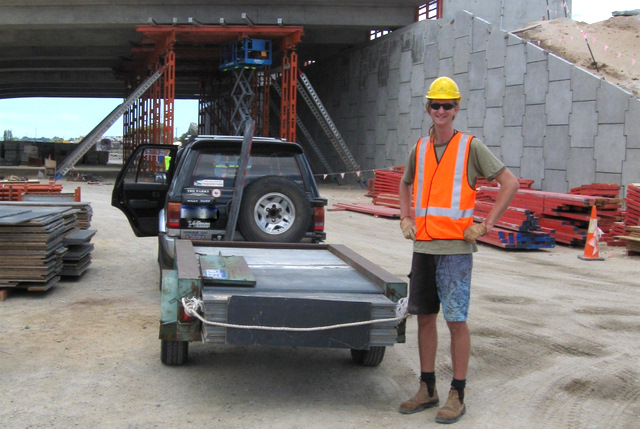Three
years ago I spent a day hoisting a nest-box designed for
Black-Cockatoos high into a Karri tree at my friend Jeff’s block near the
Porongurup Range. The box was made partly from Form Ply scavenged from a skip
bin, partly from Jeff’s Nanna’s old wardrobe, and was over a metre deep. On
that day back in November 2008, just as I’d fixed the box in place, a
pair of Carnaby’s Cockatoos flew in, passed the box and landed in a
nearby Karri. Then one of them climbed down and entered a vertical
slit-shaped hollow in the side, and it turned out to have a chick
inside! I was worried that ‘my’ new box was too close to an existing
nest, and would never be used.
We arrived down
at the block about lunchtime today, and I soon got out my climbing gear
and set up a rope to the first big limb, below the nest box. I ignored
the bark-scrapes to my legs as I began the climb, eager to reach the
box. I made it to the first limb but still needed to throw a rope over
the limb above the box in order to reach it safely. This took about ten
attempts and nearly made my arm collapse with tiredness! Eventually the
coil hit the spot and I changed ropes and carried on upwards. I was now
level with the box. I then stepped onto a thick limb, feeling the cool
sensation of Karri bark on my bare foot, and reached around the main
trunk with my safety line. It wouldn’t reach, so I glanced down to
gather more slack.
Something was crawling on
my foot. At first I just experienced the sensation of six little legs
touching my soul, but then, as I pivoted my foot upwards, the body shape
of the insect was clear. It was a BULL ANT! I’d copped many a bite from
these critters before, not the sort of welcome to the canopy I wanted! I
flicked my foot, and he clung on. He walked down toward my toes. I
rolled my foot sideways, hoping he would fall of the side, but he
climbed around the edge of my foot and carried on across my soul. I
flicked again, and he moved over my heel. Get OFF!!
My hands weren’t free and there was no way of flicking him off. I
pressed my leg up against the tree and he climbed off onto the bark. Wheeeew! Nearly got a bite there! Now for the box.
What a perfect way to end the year :-)


















































